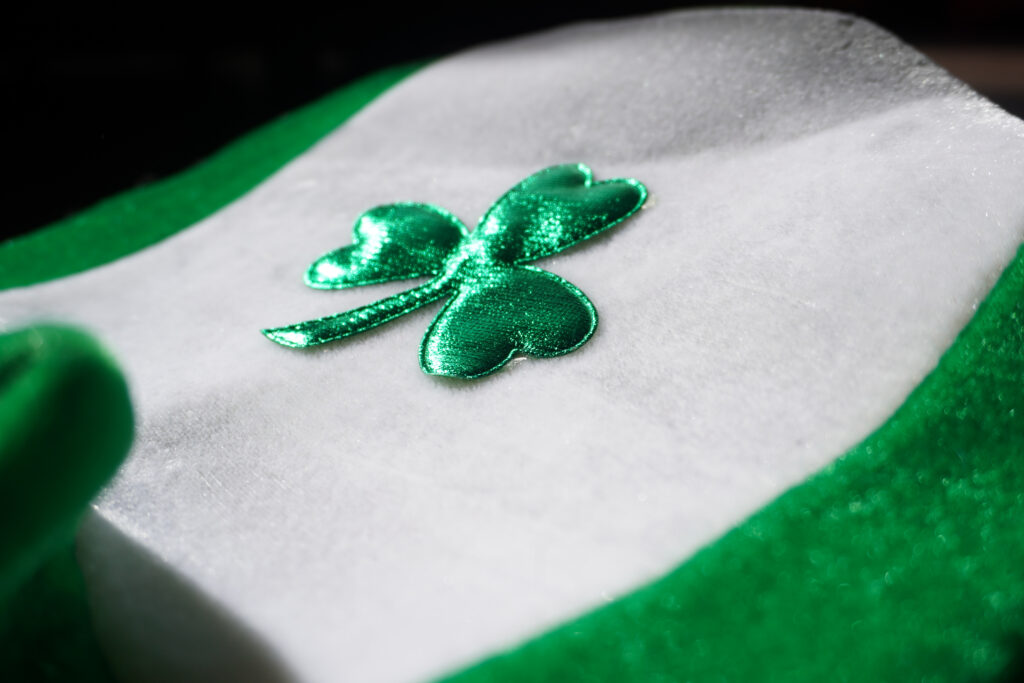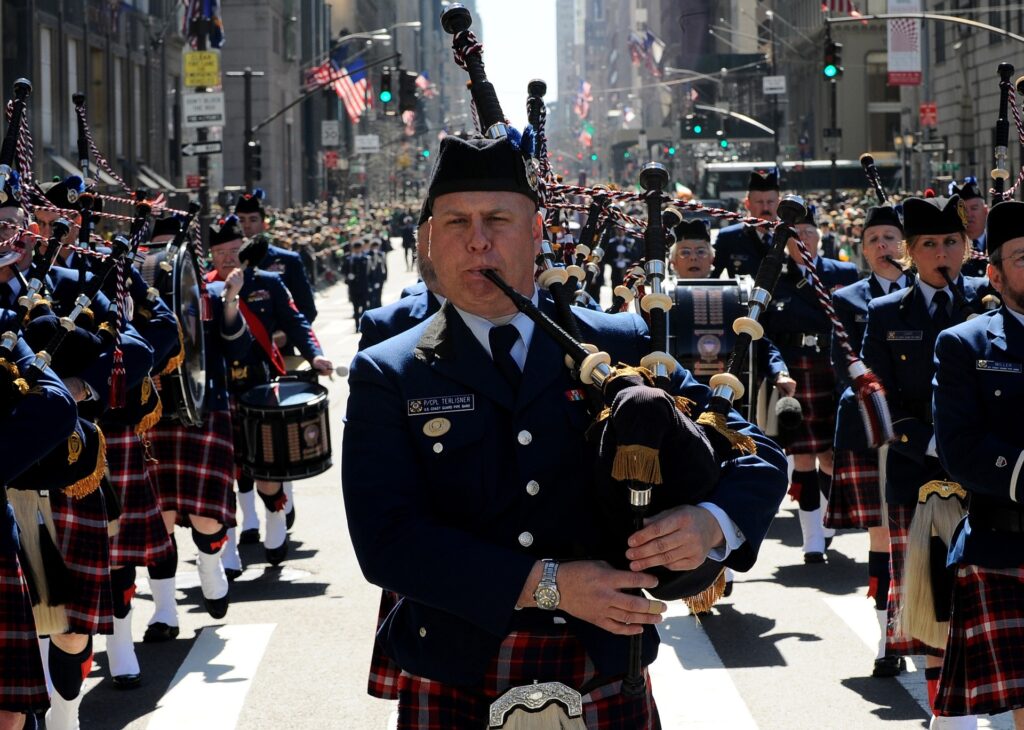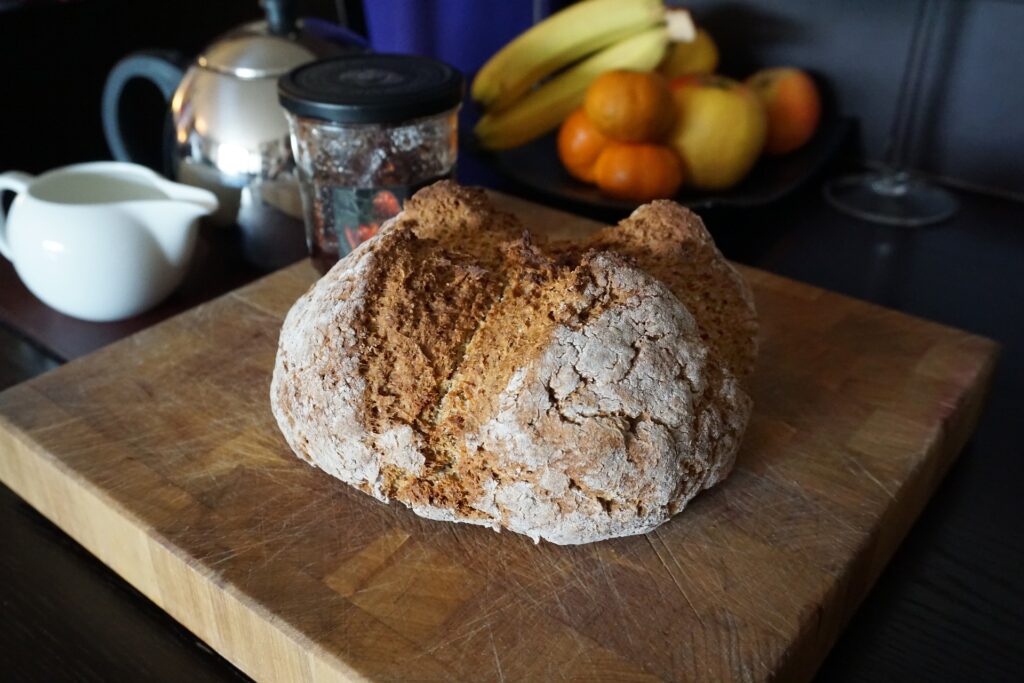
The sound of bagpipes, the synchrony of Irish step-dancers, the poise of men in kilts parading the streets, and a sea of green mark the date – March 17 – that commemorates the death of Saint Patrick, Ireland’s most popular patron saint. You don’t need to be Irish (Saint Patrick wasn’t) to appreciate the rich culture and heritage that this annual celebration highlights. In fact, legend has it that if you don’t participate by dressing in green, you are liable to get pinched by a leprechaun.
While this holiday of religious origin has become an occasion to celebrate and take pride in Irish culture and folklore, it also offers an opportunity to reflect on what this saint, who, like many saints of the era, was never canonized by a pope, brought to Ireland.
The legendary Saint Patrick
Most of what is known about Saint Patrick is based on his autobiography titled “The Declaration.” Born sometime around 373 AD, Patrick belonged to a wealthy Christian family in Roman Britain. However, at the age of sixteen, Patrick was kidnapped by Irish burglars who took him to Gaelic Ireland to serve as a slave.

His suffering during these years led Patrick to find God. In his account, he describes how an angel appeared in his dreams and urged him to flee his enslavement by taking a ship that was waiting for him on shore. Following God’s guidance, he was reunited with his family in Britain and later had a divine calling to become a priest.
Legend has it that Patrick returned to Ireland to spread Christianity, converting millions of pagans into devout Christians. Despite his remarkable efforts and contributions to the spirituality of the country, Saint Patrick was largely forgotten after his death on March 17th of 461.
Centuries later, with traditions evolving out of myth and legend, Saint Patrick’s legacy was revived; and he was honored as one of three patron saints of Ireland. In this context, Saint Patrick’s narrative adopted mystical features that make up the foundation of the fairly magical celebrations of today.
One of the most compelling stories relates that Saint Patrick, with his mighty abilities, drove all the snakes from Ireland. According to legend, he was enduring a 40-day fast on a hill when he was harassed by the snakes, which he then miraculously drove into the sea. The event is largely discredited, simply because there is no evidence of snakes existing in Ireland before that time.
Still, the captivating tale is commonly understood as an allegory, with the snakes symbolizing the Pagan religions the priest cleansed the island of by spreading Christianity. In fact, the Celtic snake is a prominent symbol in Pagan religions, often depicted with their gods. Even today, some Pagans wear a snake symbol on Saint Patrick’s Day as an act of defiance against a holiday that celebrates the elimination of the old religion.
Symbolism behind the shamrock
Green shamrocks, commonly associated with the lucky little leprechauns, are directly connected with Saint Patrick. According to legend, Saint Patrick used the three leaves of the shamrock to explain the Holy Trinity to pagans.
As a result, the Irish Christians of the 18th century started wearing them to church. Finally, the three-leaved clover was declared as the Irish national symbol in 1726. The tradition evolved into wearing green clothing, as is seen today.

Shamrocks are not only considered lucky, it is believed that these plants also have the ability to predict the weather and, what is better, break a leprechaun’s curse.
The origin of the traditional Saint Patrick’s Day parade
Saint Patrick’s day celebrations would not be complete without its revered public parades; featuring traditional Irish music, dancing, and attire. The procession can be quite long, and include marching bands, public officials, fire brigades and multiple organizations, all contributing to a carnival atmosphere.
Although parades are deemed an essential component to the Irish celebration, this tradition was originally started in the United States and did not spread to Ireland until the 20th century.
During the Great Potato Famine that deeply affected the island in 1845, hundreds of thousands of Irish immigrants moved to America in search of a better life. The traditions of their heritage continued to develop in their new-found home.

Historical records indicate that the first Saint Patrick’s parade consisted of a group of Irish soldiers who walked a few blocks together on their way to a tavern in lower Manhattan. Over the years, the simple marching steps of those soldiers evolved into one of the biggest annual parades, summoning up to two hundred thousand participants and three million expectators each year.
Authentic ways to celebrate
This holiday often falls within Lent, a 40-day period in which Catholics pray, attend mass and make symbolyc sacrifices; commemorating the time Jesus spent fasting in the desert. While many will abstain from alcohol as a Lenten sacrifice, beer was traditionally considered a source of sustenance through the duration of the season, providing extra nutrients and vitamins which would be missed during a long fast. That tradition clearly endures, as Saint Patrick’s Day is one of the top five busiest nights for bars.

Unique food traditions include corned beef with cabbage, potatoes and shepherd’s pie, and the iconic Irish soda bread. This tasty and filling snack is, for many, the perfect side to a green beer or whiskey.
More creative ways to celebrate Saint Patrick’s legacy include exploring the places where Patrick himself brought Christianity to Ireland.
Majestic hilltops and epic mountains
The vast plains of Ireland were the scenario for significant historical events that shaped the island’s Celtic history. Having been converted into tourist destinations, these sites are able to take their visitors on a magical journey that traces back to the very origins of Irish traditions.

The mighty 197-meter hill, an allegedly important site for Saint Patrick’s missionary career, harbors archeological treasures that include a Stone Age passage tomb, prehistoric burial mounds up to 5,000 years old and the famous “Stone of Destiny” or Lia Fáil.
In the town of Cashel, about 94 km north of Cork, the historical Saint Patrick’s Rock rises in the plains. According to local legends, the rock landed in Cashel as a result of Saint Patrick banishing Satan from a cave. Later, the courageous priest would use this site for the conversion of the King of Munster in the 5th century.
Visitors are mesmerized by the still-intact 12th-century round tower, the 13th-century Gothic cathedral and the graceful 12th-century Romanesque chapel, all of which are enclosed by a stone wall. Made into a tourist attraction, some of the structures underwent restoration and are open to the public for limited hours to ensure preservation.
Ireland’s “holiest mountain” is a must-see destination. Known as Croagh Patrick and commonly called “The Reek,” the 764-meter mountain is a national site of pilgrimage. History relates that around 441 BC, Saint Patrick climbed and fasted atop the mountain for 40 days and nights during Lent. Such a significant event developed into a centuries-long tradition in which devout pilgrims follow, barefoot, his original on the last Sunday of July, also called “Reek Sunday.”
Reviving traditions
After 30 years of considerable efforts to spread the Gospel in Ireland, Patrick retired to what is now County Down in the northern area of the island. He later passed away on March 17th, 461 AD in the town of Downpatrick, where he was buried in the grounds of the 12th-century.
Celebrations like Saint Patrick’s day have the potential to bring people together and revive rich cultures and traditions that shaped our civilization. By looking back and understanding the historical significance of modern celebrations, our society will be able to re-discover its roots and perhaps rescue the invaluable cultural and moral legacy left behind by the magnificent peoples that once inhabited our planet.
